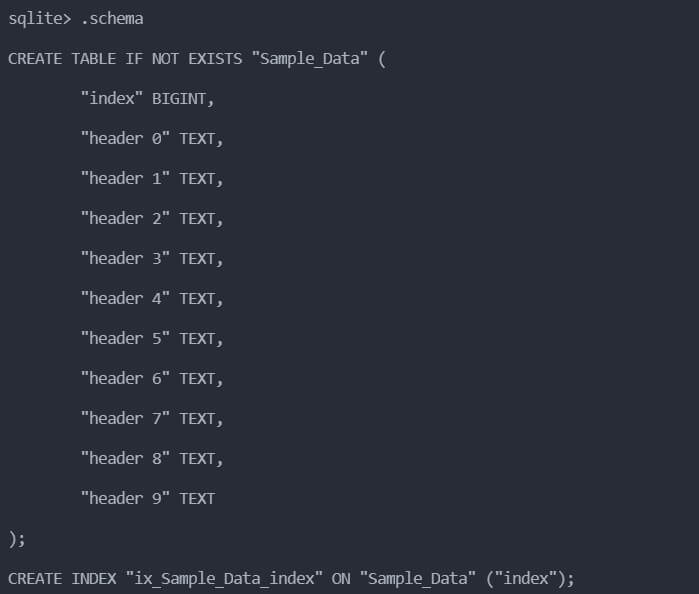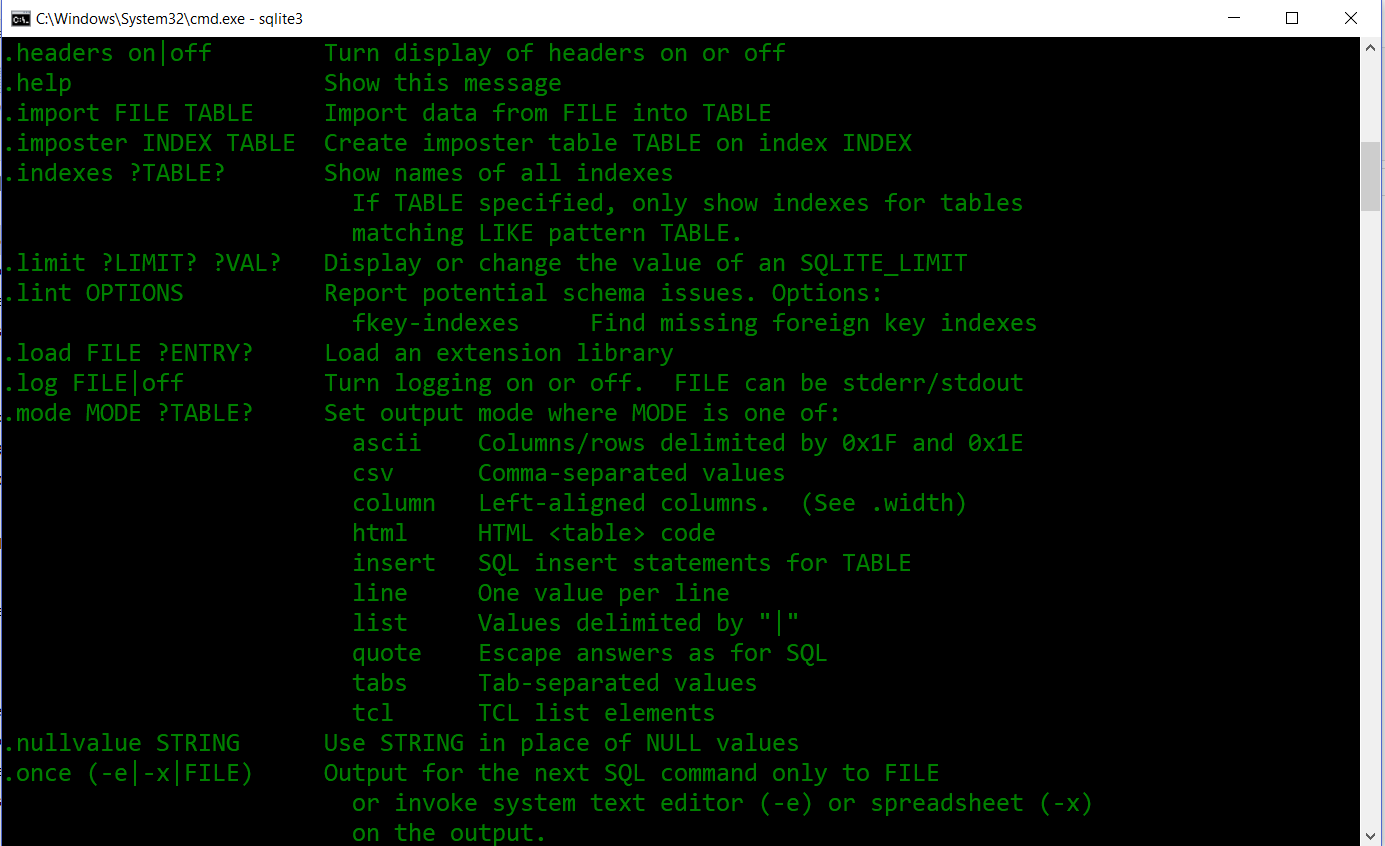
Post back if you run into any issues! Sorry again about the delay. (If you’re curious, the idea of catchupsrv is that if you had an airgapped machine with algod on it and you wanted to bring its ledger relatively up to date, you could use this tool to download all the blocks using a different machine, transfer them to the airgapped machine, and then let the airgapped algod catch up (and let algod fully validate certificates and everything) using the downloaded blocks.) (The filename for block N will be, for bizarre reasons, N in base 36.) The README has more information:
#Sqlite to json install
(It also should be insalled when you install algod, if I’m not mistaken.) You can use catchupsrv can download all the blocks (and certs) and put each one in a separate file. Rather than extracting each msgpack-encoded block from the ledger sqlite file, you may find it more convenient to use another tool called catchupsrv. There’s also a -b32 flag if you want to print blobs like hashes and addresses in base32 instead of base64. So if you’ve dumped the msgpack blob for block 100 into block100.msgpack, you could dump the JSON representation to a file with msgpacktool -d block100.json It reads from stdin and writes to stdout. Msgpacktool can decode msgpack (into JSON) with the -d flag and encode JSON into msgpack with the -e flag. (If you do need to build it from source and you run into any issues, post again and either I or someone else should be able to help.) I’m pretty sure it gets installed when you install algod,īut if not it’s in the github repo. Here I’m going to change every field to make sure it works.Sorry about the delay! To convert between msgpack and json, you can use msgpacktool. So now we have the function, and we’re calling it let’s run the application: go build So let’s try it out! Running the Application We return a success or fail message based on the result. Once again, we’re creating a struct and binding it to the JSON that exists in our context, then passing it to UpdatePerson. If there is an error, we’ll return a bad request, with the message “Invalid ID”. If there’s no error with that, we move on.

This takes c.Param("id") that we get from the URI, and converts it to an integer.
#Sqlite to json full
Here’s the full method: func AddPerson(newPerson Person) (bool, error) ) Open up models/person.go, and we’re going to add a new method. Step 10: Adding a Person to Database (AddPerson) For example: select jsonobjectid, id, fname, fname, gname, gname, genderid, genderid).

In this process, we just need a JSON object, sent as a POST, and we’ll process it and create a new record from it. If your sqlite3 is compiled with the json1 extension (or if you can obtain a version of sqlite3 with the json1 extension), then you can use it to generate JSON objects (one JSON object per row). The process to insert a record looks like this:
#Sqlite to json how to
Let’s look at how to insert a new record, as well as update it if we want to make changes later. SQLite 3.38.0 introduced improvements to JSON query syntax using -> and -> operators that are similar to PostgreSQL JSON functions.In this post we will look into how this simplifies the query syntax. So now we know how to select a batch of records and a single record.

Get the Project source code here Part 4: Inserting and Updating Records

Part four of a five part series on building a web application with Go.


 0 kommentar(er)
0 kommentar(er)
